Mode of Nutrition in Fungi : Fungi are heterotrophic in nutrition. They are chlorophyll deficient plants and hence they cannot manufacture carbohydrates using carbon dioxide, water and sunlight. Fungi are with simple structural organization, thus they always depends on dead or living organic matter for their energy requirements.
Mode of Nutrition in Fungi
Ø On the basis of mode of nutrition, fungi are classified into four groups:
(1). Saprophytes
(2). Parasites
(3). Symbionts
(4). Predacious fungi
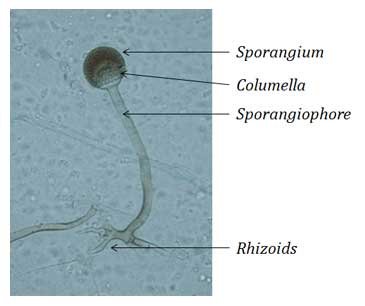
Rhizopus (source wikipedia)
(1). Saprophytes
Ø Saprophytic fungi obtain nutrition from dead organic matter
Ø These fungi lives on dead organic matter or excreta of both plant and animal origin
Ø Examples: Mucor, Rhizopus, Penicillium and Aspergillus
Ø Vegetative hyphae of these fungi directly absorb food materials from organic matter
Ø Saprophytic fungi may be of two types:-
(1). Ectophytic saprophytes: grown on the surface of organic matter
(2). Endophytic saprophytes: grown inside the organic matter
Ø In some ectophytic fungi such as Rhizopus, special absorptive structures such as rhizoids are developed for the easy absorption of food materials
Ø Saprophytic fungi produce exo-enzymes (enzymes which acts outside the cell)
Ø These enzymes digest the complex organic matter in the substratum into simpler compounds to facilitate easy absorption by the hyphae
Learn more: Fungi- General Characteristics
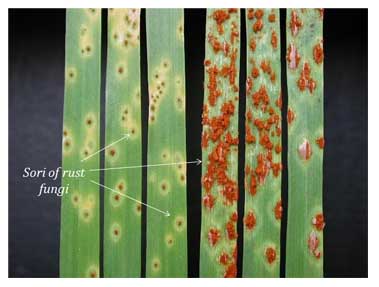
Rust Disease of Wheat by Puccinia
(2). Parasites
Ø Parasitic fungi take food from other living plants or animals
Ø The living organism on which the fungi parasitize are called host
Ø Parasitic fungi are harmful to the host and they produce disease condition in host organisms
Ø The relationship of host and parasite in pathology is known as parasitism
Ø Parasitic fungi are of three types:-
(1). Obligate parasites: these fungi can live only as parasite on a living host
Obligate parasites cannot live on dead organic matter
Example: Puccinia which cause rust disease in several crop plants including wheat
(2). Facultative saprophytes: They are parasites, but they can also survive on dead organic matter in the absence of living host
Example: Taphrina
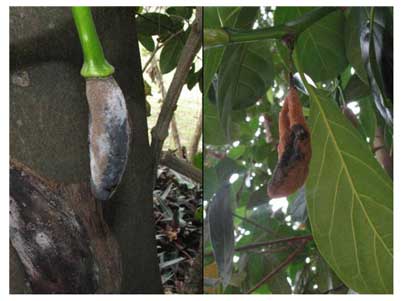
Rhizopus infection in Jack-fruits (wikipedia)
(3). Facultative parasites: these fungi usually follow saprophytic mode of nutrition
Under certain conditions, they parasitize suitable host plants
Example: Fusarium and Pythium which cause soft rot disease in crop plants
Ø On the basis of location of parasite in host organism, the parasites may be:
Endoparasite: parasite live inside the host tissue
Ectoparasite: parasite fungi which live on the outside surface of host
Ø Parasitic fungi possess specialized absorptive structures called haustoria for the absorption of nutrients from the host cells
Ø Haustoria are specialized hyphal modifications
Learn more: Hyphal Modifications in Fungi
Ø Haustoria may be inter-cellular (occupy between two cells) in intra-cellular (occupy within the cell)
Ø Size and shape of haustoria varies in different fungal groups
Ø Haustoria may be round, knob like, club like or branched
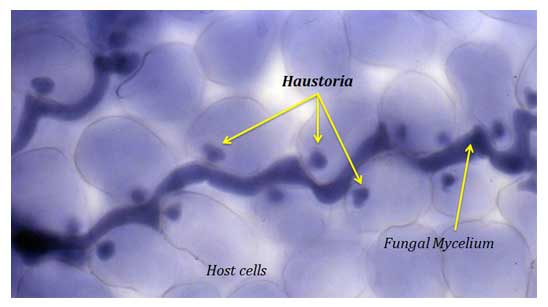
Haustoria of Parasitic Fungus (source wikipedia)
(3). Symbionts
Ø These fungi grow on or with other living organism but both of them are mutually benefited
Foliose Lichen (source wikipedia)
Ø Lichens and mycorrhiza are examples
Ø Lichens are the symbiotic association between algae and fungi
Ø Here both fungi and algae are mutually benefited
Ø Algae synthesize carbohydrates where as the fungi provides shelter for algae
Ø Mycorrhizae are the symbiotic association between fungi and roots of some higher plants
Ø Mycorrhizae helps in the absorption of nutrients by the host plant
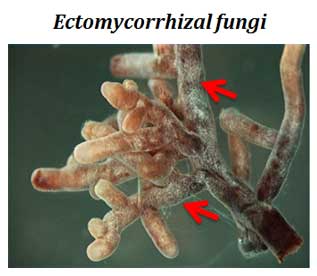
Amanita Mycorrhiza (wikipedia)
Ø Mycorrhiza may be ectophytic or endophytic
Ø Ectophytic mycorrhiza are external mycorrhiza and they are confined to the outer region of the roots
Ø Endophytic mycorrhiza are internal mycorrhiza and they are found deeply in the root cells
(4). Predacious fungi
Ø They are animal capturing fungi (predators)
Ø These types of fungi possess special hyphal traps called snares to tap and capture small animals such as nematodes and protozoa
Ø They usually inhabit in the soil
Ø They possess rapidly constricting hyphal traps which hold the captive for long time
Ø They also have haustoria which directly inserted into the tissue of the prey
Ø Some predacious fungi also produce sticky secretions for capturing nematodes
Ø Examples of predator fungi: Arthrobotrys, Dactylella, Dactylaria
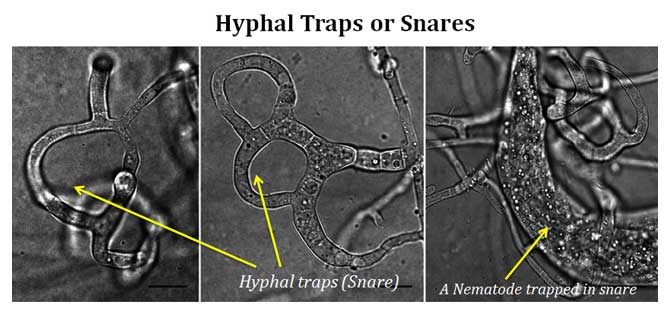
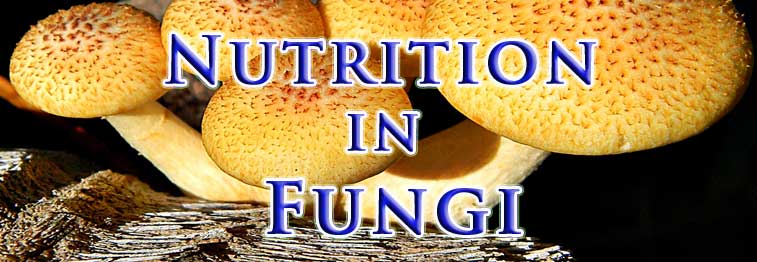

Fungi are not plants. They are more closely related to animals than to plants. In the past they were lumped into a broad category with plants because they are mostly stationary.
However, we are not living in the past and should not keep using outdated information that was already outdated before the internet was conceived.
Thanka
V. nice
Thank You
Very good ppt but
I think Diagrams are not good.
And we know that Diagrams is very important part of biology.